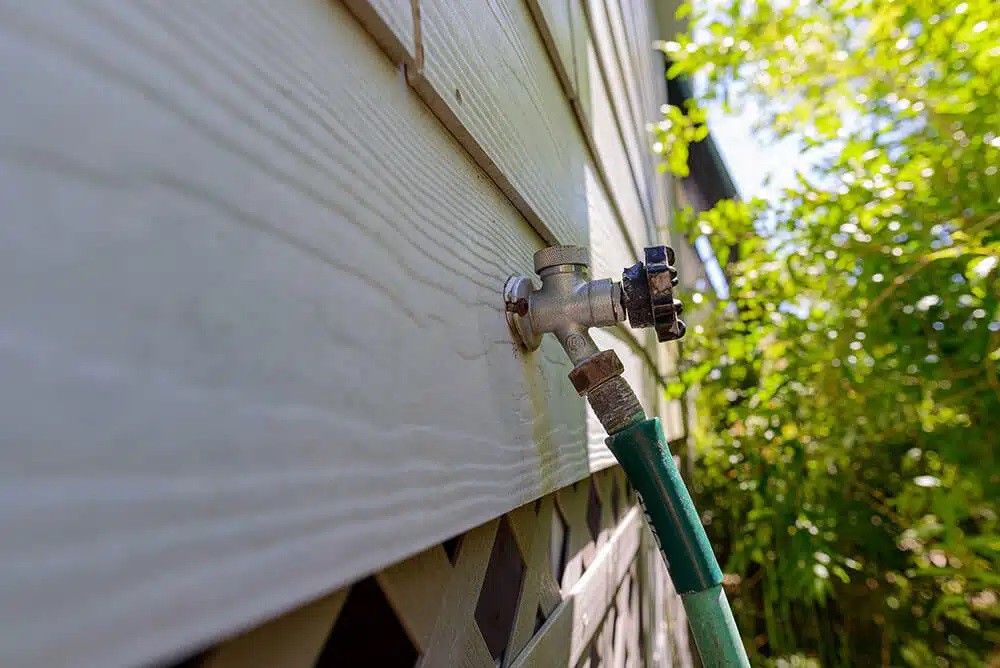What Are The Consequences Of Not Winterizing Your Outdoor Faucet?
One common consequence of not winterizing your outdoor faucet is that the water line may freeze and burst. This can cause substantial damage to your property.
A broken pipe can also release water, flooding your yard or basement. Suppose there’s a faucet attached to your home’s main water supply. In such cases, a frozen pipe could also disrupt service and lead to extensive repairs.
Another potential consequence of not winterizing your outdoor faucet is that the valve may become stuck in the open position. This will cause water to throw through your pipes non-stop. Such an occurrence wastes enormous amounts of water and can create a dangerous icicle buildup on or near your house.
Considering the above mentioned, protecting your outdoor faucets from cold weather is essential. By following some straightforward guidelines, you can ensure that they remain in good working condition all season long.
Best Ways To Winterize Outdoor Faucets
Outdoor faucet winterization begins with proper shut-off and draining of any water hoses connected to the faucet. Here’s how you can winterize faucet:
Shut Off The Water To Your Outdoor Faucet
The best way to prepare your outdoor faucets for winter is by shutting off the water to the faucet. To do this, start by locating the valve controlling the water flow to the faucet. This valve is typically located near your home’s foundation, close to where the water line enters your home. Once you have shut off the water, open the outdoor faucet to drain any remaining water left in the tube.
Tip: Always turn off the main water supply completely before shutting off any valves.
Insulating Outside Faucets
Next, you must insulate your outdoor faucet. You can do this by wrapping the exterior of the faucet in an insulating material such as a foam pipe insulation cover. Applying an outdoor faucet cover to the faucet can help prevent pipes from freezing and creating costly repairs.
You can also use a hose bib cover for extra protection against cold temperatures. Hose bib covers are designed to fit over outdoor faucets and provide additional insulation.
Tip: Ensure that any covering material is secure and covers the entire faucet’s exterior.
Disconnect And Store Hoses
During the winter, it is essential to disconnect water hoses from outdoor faucets. This will help prevent freezing temperatures from damaging the pipes or fittings of your hose.
To disconnect a water hose from an outdoor faucet, begin by turning off the main water supply and opening the outdoor faucet to release any remaining water. Once done, disconnect the hose from the faucet.
Also, place a rubber end cap on your hose fitting and store it safely away from freezing temperatures. It is essential to ensure that all hoses are completely dry before being stored, as any water remaining in them could freeze and cause damage to the hose or its fittings.
Following these simple steps, you can prepare your outdoor faucet for winter and prevent costly repairs due to freezing temperatures.
Top Tips To Protect Outdoor Faucets From Freezing
Here are a few additional tips to help protect outdoor faucets from freezing:
Insulate pipes: Wrap exposed water pipes leading to the outside faucet with insulation material such as foam pipe insulation, newspaper, or rags to help maintain a higher temperature in the area around the outdoor faucet.
Install a heat tape: Heat tape, or heating cable, is an electrical device wrapped around exposed pipes to help them maintain a higher temperature and protects them from freezing.
Allow water to drip: If temperatures are expected to drop below freezing, allow a small amount of water to drip slowly out of the faucet and turn off the water supply when temperatures rise again. This can help keep the pipes from freezing and overflowing due to pressure buildup.
Install a frost-free faucet: Frost-free faucets are designed to keep water from freezing in the pipe by draining it out when temperatures drop.
Close outdoor faucet valves: To prevent water from entering the lines during cold weather, close all outside spigot valves and put on an outside spigot cover.
Ensure that landscaping is sloped away from the faucet: Creating a proper slope around the area can help keep water from pooling around it and freezing.
Install a weather shield: A protective winter pipe cover over the faucet can help to keep cold air away from the pipes and protect them from freezing.









